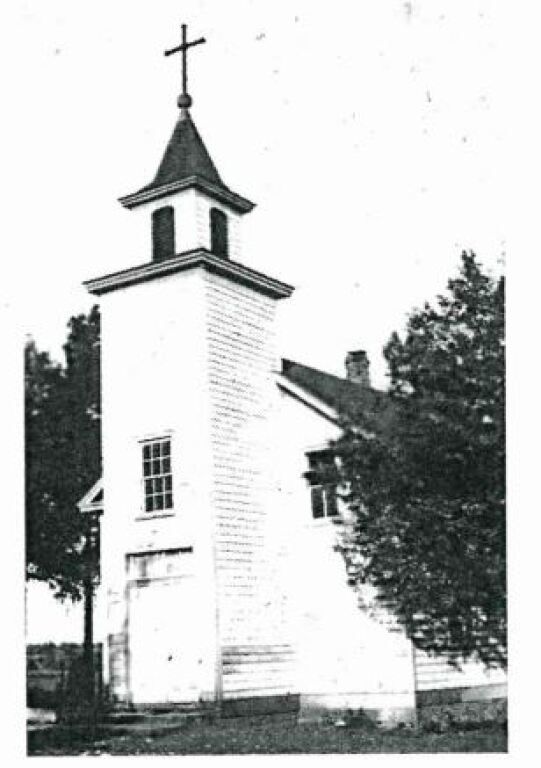Parish History
History of Saint Michael's Catholic Church
St. Michael’s Church began as the heart of the small German-Catholic Community of Saint Florian. At the time Saint Florian was just an old cotton plantation. There were no Catholic Churches in the area or in the nearby town of Florence. The highest priorities of the German settles were to build a Catholic Church and a school. In 1872, Father J. H. Heuser, an immigrant from Austria and director of the Homestead Society of Cincinnati, had established four Catholic parishes in southern Tennessee. He purchased the Wilson Plantation near Florence, Alabama, where St. Florian would be established following the American Civil War. The first church and parsonage were built in 1872. The church was 50 feet long by 24 feet wide. The church was enlarged in 1878 and in 1889. Fr. Heuser came down from Tennessee for Mass, but not on a regular basis. It was in the spring of 1873 that he was able to obtain a priest for the church. The community was named for Florian Rasch who donated the first church bell.


It was originally thought that the Church and Parish were named for their first permanent pastor, Fr. Michael August Merz (Mertz). Father Merz brought his niece, Annie Merz with him to Saint Florian and she became the first teacher for the school. Early in 1876, a smallpox epidemic broke out and affected almost every family in the community. The disease came from a traveling salesman who stayed in the community. Fr. Merz contracted the disease but was on the way to recovery when he got out of his sickbed to administer last rites to a parishioner. It is believed that it weakened him and led to his death on February 12, 1876. He is buried in St. Michael’s cemetery. The Church is still named after him in his honor but more importantly after Michael the Archangel.
Father Heuser, a learned man with good intentions, was not a shrewd business man. He was unable to pay a $3,000 mortgage on the Wilson Plantation. By the end of April 1876, the mortgage would foreclose. The parishioners were alarmed at the possibility of losing their homes and land. Fr. Heuser and some of the farmers wrote to Archabbot Boniface Wimmer, O.S.B., from Bavaria, who had established St. Vincent Abbey at Latrobe, Pennsylvania, imploring him to take over the parish and assume the debt. Archabbot Wimmer was touched by the appeal. After receiving permission from the Bishop of Mobile, and receiving monetary help from a Royal friend, King Louis I of Bavaria, Archabbot Wimmer sent the first Benedictine monks in April, 1876. They were given the church, rectory, and 800 acres of land in lieu of the mortgage. St. Michael’s, served by the Benedictines, was an established parish. St. Michael’s Parish has been blessed to be under the guidance of Benedictine Priests since 1876 and Benedictine Sisters from 1917 to 1968.
The community continued to grow and flourish under the guidance of the Benedictines, and by the beginning of the new century the parishioners had started a building fund for the construction of a new church. Father Alphonse employed an architect to draw up the plans, and in 1914 the parishioners began the excavation. The blueprints, alone, cost $300 which was a large sum of money at that time. Rock for the foundation was quarried at the nearby Shoal Creek and local craftsmen donated their labor to construct the building. The cornerstone was laid in spring of 1916 but it wasn't until 1918 that the parish was financially able to finish the walls, roof and tower and begin attending Mass in the new building. There were no regular windows installed in anticipation of the purchase of stained glass windows featuring ecclesiastical art. Only canvas covered the window openings until the late 1920's.
In 1924 when the parish felt their financial condition was sufficient to proceed, representative of European church window firms arrived to submit samples of their artwork and the Bavarian firm of F. X. Zettler from Munich received the contract. Father Alphonse and the members of the Board of Trustees selected the subjects (saints) for the windows. Each window opening was tagged with its subject's name and the congregation was invited to choose which window they would like to contribute to. By the end of the 1920's the windows were manufactured and shipped from Germany and installed. Father Albert described the beauty of the windows as follows, "It would take an artist to do justice to our windows. Even the laymen marvel at the variety of color and tints; that rich red, the golden hues, the tender green of foliage, as illuminated by the rising or setting sun. Masterpieces of art are the faces of the saints, delicately executed, life-like in appearance. There is nothing loud, worldly, or offensive but deeply imbued with a devotional spirit and high artistic value." The parish has prospered from its humble beginnings in 1872 and is still growing.

